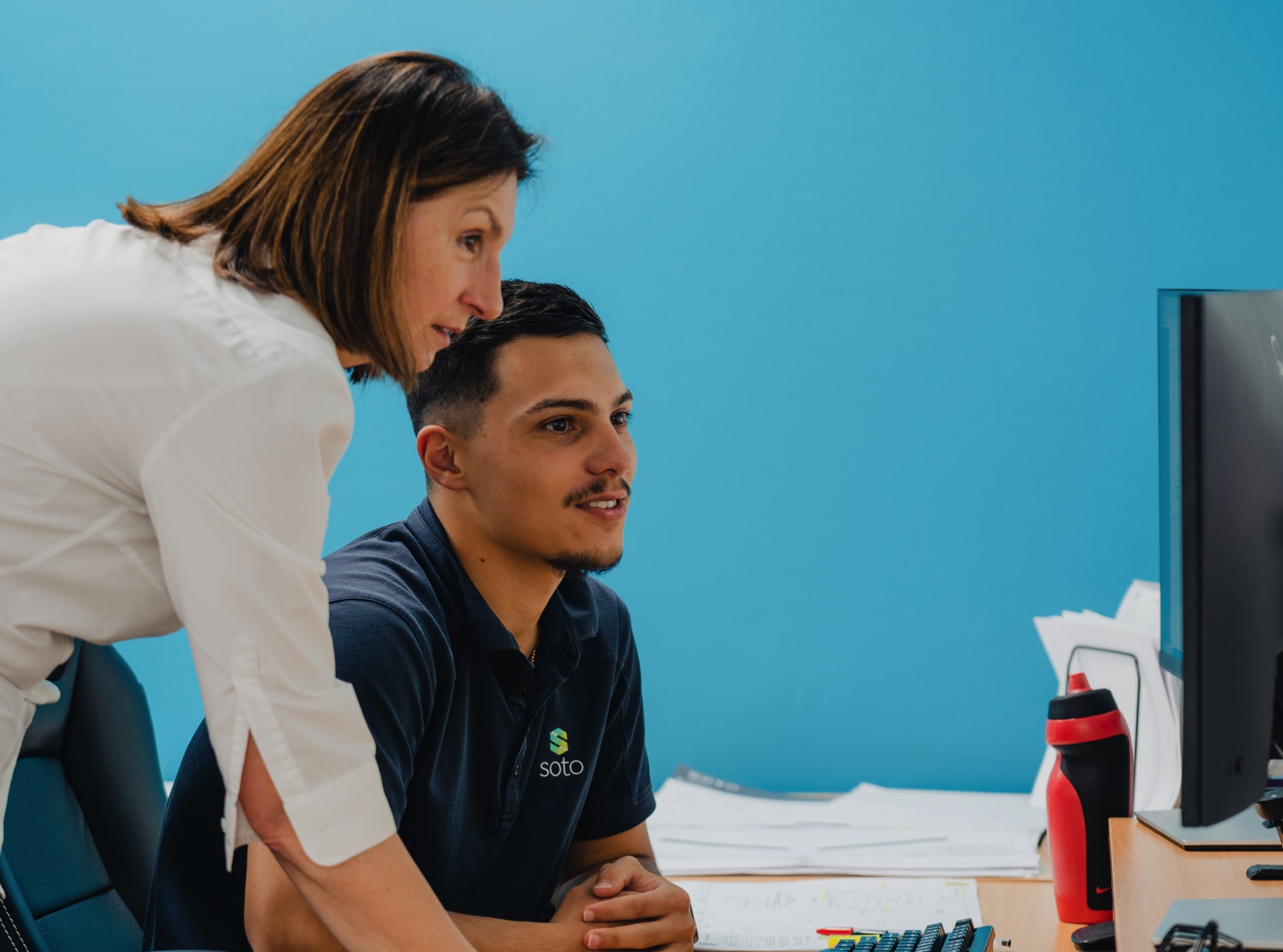
The pathway to a successful engineering career begins with bridging the gap between theory and application. A path that can be expedited with the proper guidance.
For Zeljka Vanovac, a Senior Design Draftsperson at SOTO Consulting Engineering, engineering design is a puzzle. There are shapes, patterns, and different ways of seeing an object across varying planes and dimensions to figure out how all the pieces fit together.
This way of ‘seeing’ often separates the good engineers from the great. Ms Vanovac has a role in supporting younger engineers and draftspeople to move from the fundamental to being able to think three-dimensionally. It’s the core of what she sees as the biggest hurdle for graduates and trainees: taking their theoretical knowledge into the real world.
“Many students are taught three-dimensional programs such as SolidWorks and Inventor, but they don’t understand the basics of drafting,” she says. “Students are not taught how to create sections or how views are created. They learn how to do certain things to produce something faster, but that doesn’t necessarily work well in the real world.”
Knowledge needs experience
Graduating with an engineering degree or as a qualified draftsperson is a significant accomplishment. However, while the demand for engineering skills grows, recent graduates face unique challenges in landing a job. One of the most significant challenges that recent engineering graduates face is demonstrating practical skills. Many employers are looking for candidates who can hit the ground running. They are proficient in using the latest tools and technologies in their respective engineering disciplines and can use those in a practical setting to solve real-world problems.
SOTO Chief Operating Officer Jim Allan says developing graduates into engineers starts with building their confidence through mentoring. “We have them view typical examples of our work –calculations, drawings and 3D models and so on – and ask them to illustrate the methods they would use to work through the issue or design.
“Their mentors explain SOTO procedures and methodology in approaching the task and encourage them to apply their theoretical knowledge to the practical aspects of the job through in-house tools or software. Explanations and collaborative discussion are critical, as is patience in guidance. It usually takes about six months for young engineers to become somewhat self-sufficient.”
Starting with the basics
In her role, Ms Vanovac sets new draftspersons a challenge: a complete design drawing of a simple object in the office, such as the air conditioner remote control cradle. It sounds simple, but it means they must approach the problem from every angle and understand how the parts are connected.
“The object is quite complicated yet simple in some ways. They have to look at cutouts, details, and sections and draw them from scratch. It challenges their ability to imagine sections and how to assemble the drawings logically.”
The exercise is relevant to the real world. Engineers and design draftspeople at SOTO regularly work in environments where new structures or equipment have to be installed and connect with existing components, much like a puzzle. Being able to solve the puzzle can be the difference between a smooth and hassle-free project and one that requires costly rework.
It also means that all disciplines have to collaborate to deliver holistic services to clients. SOTO, this year celebrating its 25th anniversary, actively encourages collaboration and communication across disciplines and shaping a team that can work together effectively. The skills not taught in a textbook or classroom where the emphasis is typically on technical rather than interpersonal skills.

Patience and persistence
Ms Vanovac, who originally studied metallurgy and electrical engineering, said she was heavily influenced by her father and uncles, who all worked in technical and engineering-related fields. She originally wanted to be an architect but changed to electrical engineering and metallurgy. Those early influences shaped her desire to learn and reinforced the importance of having good mentors.
“When I sit down and do something in my work, I tell a younger person just to sit and watch,” Ms Vanovac says. “Having someone model their actions is much more effective than simply telling them. What you learn at TAFE or university is good, but until you are in the real world, showing them how to solve problems, that’s when graduates learn all the things that are not in the textbook.
A key theme among successful engineers is their passion for their work. Ms Vanovac agrees that enjoying the process is vital. “To succeed in engineering, you must love what you do. You also have to work at it and spend time learning and developing your skills and knowledge. Then you will be successful.”


